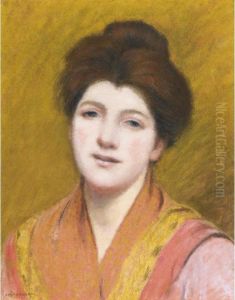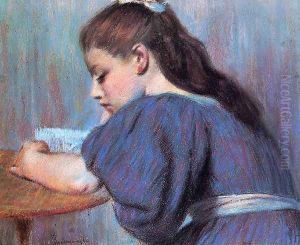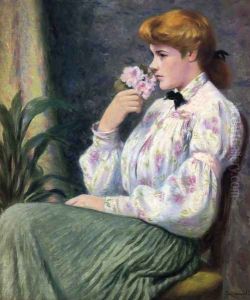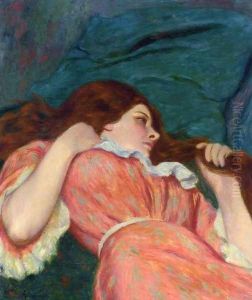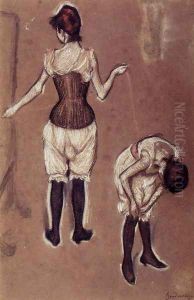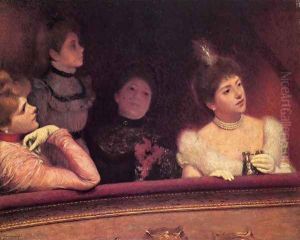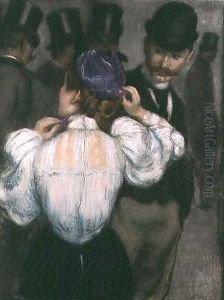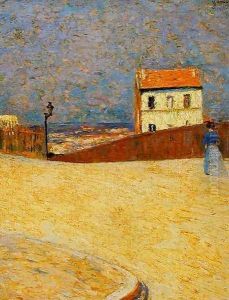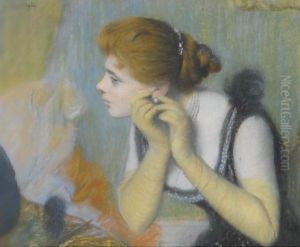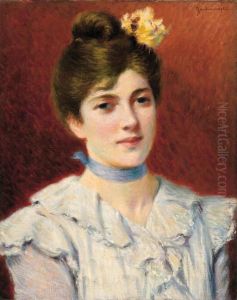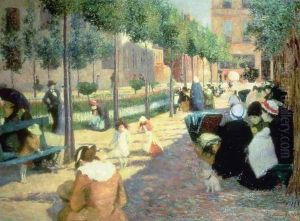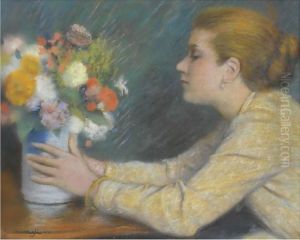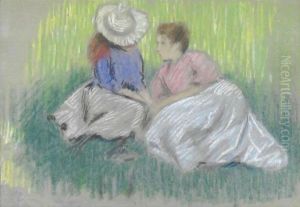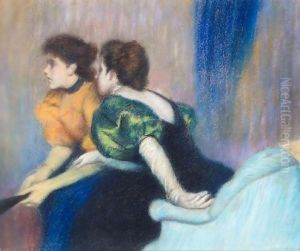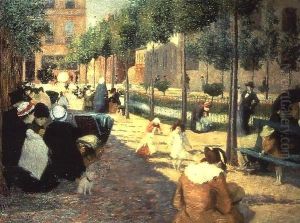Federigo Zandomeneghi Paintings
Federigo Zandomeneghi was an Italian Impressionist painter who played a significant role in bringing the Impressionist movement to Italy. Born on June 2, 1841, in Venice, Italy, he was the scion of a family with a rich artistic tradition; his father and grandfather were both sculptors. Zandomeneghi initially trained at the Accademia di Belle Arti in Venice, but his early work was influenced by the Italian tradition of Realism.
During the 1860s, Zandomeneghi became involved with the Macchiaioli group, which was the Italian counterpart to the French Impressionists. However, Zandomeneghi's desire to explore more innovative artistic paths led him to move to Paris in 1874. There, he fully embraced the Impressionist style, befriending Edgar Degas and becoming immersed in the vibrant artistic community of the city. His work began to reflect the typical Impressionist concerns with light and color, as well as the movement's characteristic brushwork.
Despite being Italian, Zandomeneghi is often associated more with French Impressionism due to the formative impact of his Parisian period. His paintings frequently depicted scenes of contemporary Parisian life, including intimate indoor settings, portraits, and figures, especially of women. He exhibited with the Impressionists in 1879, and continued to show his work with them in the future, firmly establishing his place within the movement.
Zandomeneghi never achieved the same level of fame as some of his Impressionist contemporaries, but he was respected by his peers and maintained a dedicated following. After the turn of the century, he also engaged with pastel, a medium through which he achieved a delicate interplay of light and texture that further enriched his portraits and figure studies.
Federigo Zandomeneghi passed away on December 31, 1917, in Paris. Though he spent much of his life in France, his work has been celebrated in Italy as well, particularly for bridging the gap between Italian and French art of the late 19th century. His paintings are held in various art collections around the world, contributing to the legacy of Impressionism beyond the confines of its French origins.










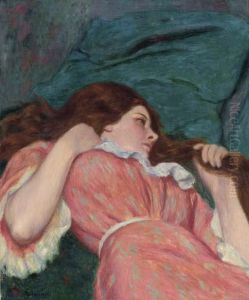



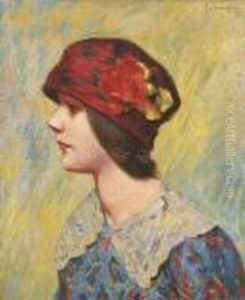




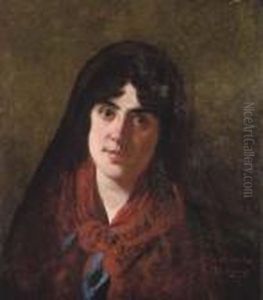
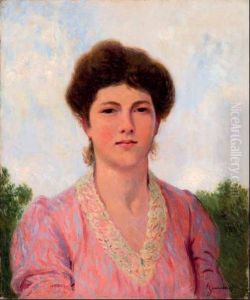



![Devant La Glace [ ; Looking At
Herself In The Mirror, Oil On Canvas Signed And Dated '95 ; Bought
Directly From The Artist By Durand-ruel In 1895]](https://www.niceartgallery.com/imgs/1709647/s/federigo-zandomeneghi-devant-la-glace-looking-at-herself-in-the-mirror-oil-on-canvas-signed-and-dated-95-bought-directly-from-the-artist-by-durandruel-in-1895-d2a4c237.jpg)










